
Gust is a video game developer and division of Koei Tecmo Games, known for their Atelier franchise.
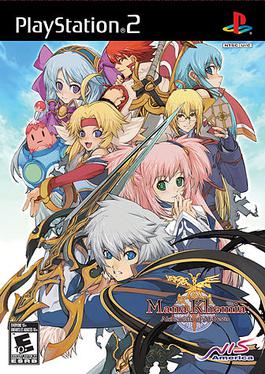
Mana Khemia: Alchemists of Al-Revis is a role-playing video game developed by Gust Co. Ltd. in 2007 for the PlayStation 2. The game is the ninth entry to Gust's Atelier series, and incorporates elements of standard turn-based combat and alchemy. A PlayStation Portable version was released which included additional features.

The Atelier series is a franchise of role-playing video games developed by Gust Corporation since 1997, primarily for the PlayStation line of consoles. Main entries in the series have seen consistent releases for Microsoft Windows since 2015 and the Nintendo Switch since 2017. New games are released in the series on an almost yearly basis. The series was solely released in Japan and Asia until 2005, after which the series has seen worldwide releases.
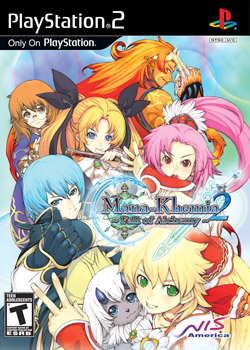
Mana Khemia 2: Fall of Alchemy is a role-playing video game developed by Japanese developer Gust Co. Ltd. for the PlayStation 2. A "Portable+" version for PlayStation Portable was released on 1 October 2009. The game is the direct sequel to Mana Khemia: Alchemists of Al-Revis, as well as the tenth installment to the Atelier series.
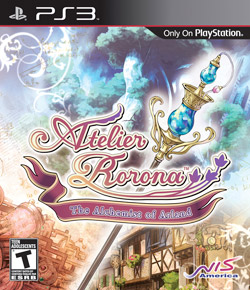
Atelier Rorona: The Alchemist of Arland is a Japanese role-playing video game developed by Gust Co. Ltd. It first released for the PlayStation 3 on June 25, 2009, in Japan and was later re-released under the PlayStation 3 the Best label on September 23, 2010. The North American release followed on September 28, 2010, along with a European release on October 22, 2010 and an Australia release on October 28, 2010.
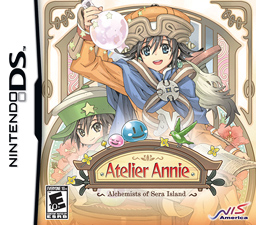
Atelier Annie: Alchemists of Sera Island is a role-playing video game developed by Japanese developer Amazing for the Nintendo DS.
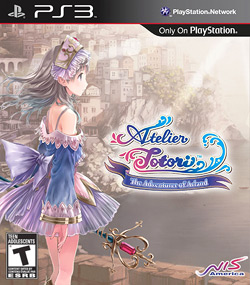
Atelier Totori: The Adventurer of Arland is a Japanese role-playing video game developed by Gust Co. Ltd. It was first released for PlayStation 3 on June 24, 2010 in Japan.

Atelier Meruru: The Apprentice of Arland is a Japanese role-playing video game developed by Gust Co. Ltd. It was released for PlayStation 3 on June 23, 2011 in Japan. Atelier Meruru is the thirteenth installment in the Atelier series, and it continues the series' emphasis on item creation and synthesis. It is the third game in the Arland series and a direct sequel to Atelier Totori: The Adventurer of Arland. It was withdrawn from the market after a month due to being mis-rated, only being re-released after CERO applied a B rating a few days later. It is notably the last title that Gust self-published before merging with Tecmo Koei. A PlayStation Vita version titled Atelier Meruru Plus: The Apprentice of Arland was released on March 20, 2013 in Japan.

Atelier Ayesha: The Alchemist of Dusk is a Japanese role-playing video game developed by Gust Co. Ltd. The character designs are by Hidari. It is the fourteenth title in the Atelier series, coming after Atelier Meruru, but has a storyline independent from previous titles in the series. The game is the first installment in the Dusk storyline. An English language release was published in March 2013 by Tecmo Koei in western regions. A PlayStation Vita version titled Atelier Ayesha Plus: The Alchemist of Dusk was released on March 27, 2014 in Japan, January 13, 2015 in North America and January 14, 2015 in Europe. There is also a drama CD and novel based on the game.

Atelier Escha & Logy: Alchemists of the Dusk Sky is a Japanese role-playing video game developed by Gust Co. Ltd. Given the project code "A15", it is the 15th game in the official Atelier series and the second installment of the Dusk storyline. Hidari remains as the character designer and the game runs on the LTGL engine. It was released in Japan on 27 June 2013.
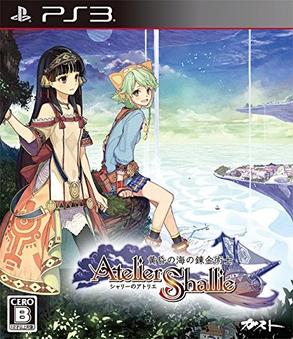
Atelier Shallie: Alchemists of the Dusk Sea is a 2014 Japanese role-playing video game developed by Gust for the PlayStation 3. It is the 16th main entry in Gust's Atelier series and is currently the final installment of the Dusk trilogy. The game was released in North America and Europe in March 2015.

Atelier Sophie: The Alchemist of the Mysterious Book is a 2015 Japanese role-playing video game developed by Gust for the PlayStation 3, PlayStation 4, PlayStation Vita (digital-only) and Microsoft Windows. It is the 17th main game in the Atelier series and the first game of the Mysterious storyline, as well as the debut of Koei Tecmo taking over publishing rights for Western regions in place of NIS America. The enhanced version of the game titled Atelier Sophie: The Alchemist of the Mysterious Book DX was released for PlayStation 4, Windows, and the Nintendo Switch on April 22, 2021.
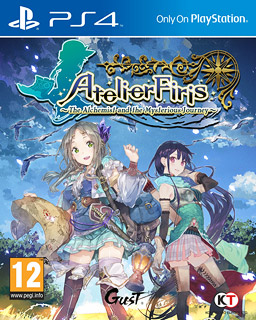
Atelier Firis: The Alchemist and the Mysterious Journey is a 2016 Japanese role-playing video game developed by Gust for the PlayStation 4, PlayStation Vita, and Microsoft Windows. It is the eighteenth main game in the Atelier series and the second game of the Mysterious storyline. It was released on North America and Europe on March 10, 2017, the following year. The enhanced version of the game titled Atelier Firis: The Alchemist and the Mysterious Journey DX was released for PlayStation 4, Windows, and the Nintendo Switch on April 22, 2021.

Atelier Lydie & Suelle: The Alchemists and the Mysterious Paintings is a role-playing video game developed by Gust, and originally released in Japan for the PlayStation Vita and PlayStation 4 in December 2017. It was released worldwide in March 2018 for the PlayStation 4, Nintendo Switch and Microsoft Windows. It is the nineteenth main entry in the Atelier series celebrating the 20 years of the franchise. It is also the third game of the Mysterious storyline and the last one in chronological order.

Atelier Lulua: The Scion of Arland is a 2019 role-playing video game developed by Gust and published by Koei Tecmo for PlayStation 4, Nintendo Switch and Windows. It is part of the Atelier series, and the fourth entry in the Arland subseries. Following trainee alchemist Lulua Frixell as she goes on a journey following the discovery of a magical book called the Alchemyriddle, gameplay features exploration and battles using turn-based combat, and alchemic synthesising for items and quest objectives.

Nelke & the Legendary Alchemists: Ateliers of the New World is a 2019 video game developed by Gust and published by Koei Tecmo for PlayStation 4, Nintendo Switch, Windows, and PlayStation Vita only in Japan. A title within the Atelier series, the gameplay combines a city-building simulation with role-playing elements. The storyline follows Nelke von Lestamm as she attempts to build her own city while seeking a magical tree, employing legendary alchemists from the Atelier franchise to aid her.

Atelier Ryza: Ever Darkness & the Secret Hideout is a role-playing video game developed by Gust, and originally released in Japan for the PlayStation 4, Nintendo Switch and Microsoft Windows in September 2019. It was released in North America in October 2019 and rest of the world in November 2019 for the same consoles. It is the twenty-first main entry in the Atelier series.

Atelier Ryza 2: Lost Legends & the Secret Fairy is a role-playing video game developed by Gust. It is the twenty-second main entry in the Atelier series, the second game of the Secret storyline and the first game of the series with a returning protagonist. It is the sequel to Atelier Ryza: Ever Darkness & the Secret Hideout.

Atelier Sophie 2: The Alchemist of the Mysterious Dream is a 2022 Japanese role-playing video game developed by Gust. It was released in February 2022 for Microsoft Windows, Nintendo Switch, and PlayStation 4. It is the 23rd game in the Atelier series and the fourth game in its Mysterious subseries, while chronologically set between the events of Atelier Sophie: The Alchemist of the Mysterious Book and Atelier Firis: The Alchemist and the Mysterious Journey. It is also the second game of the series with a returning protagonist, after Atelier Ryza 2: Lost Legends & the Secret Fairy.
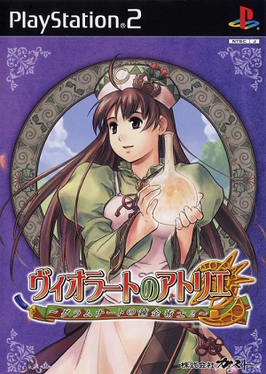
Atelier Judie: The Alchemist of Gramnad and Atelier Viorate: The Alchemist of Gramnad 2 are a duology of role-playing video games developed and published by Gust for the PlayStation 2. Forming the fourth and fifth entries in the Atelier series, they were respectively published in 2002 and 2003. Expanded versions of the games were released for PlayStation Portable in 2010 and 2011. Both titles follow a young female alchemist from the kingdom of Gramnad; Atelier Judie focuses on the character Judith after an accident transports her through time, and Atelier Viorate follows the young Viorate running an alchemy workshop in a dwindling town. The gameplay has the characters exploring for items to perform alchemy, fighting enemies in turn-based combat.






















